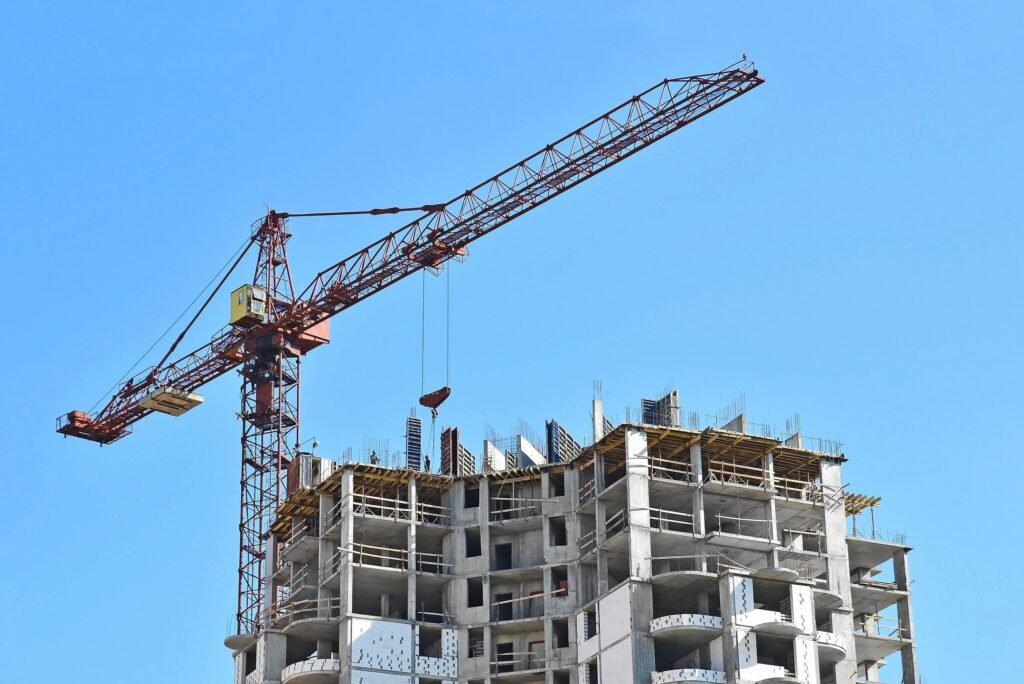Why Smog In Delhi Every Year?
Smog In Delhi every November is primarily caused by a combination of environmental, agricultural, and meteorological factors. Here’s a detailed breakdown:
1. Agricultural Stubble Burning reason for Smog In Delhi (Top Most)
- What Happens: Farmers in neighboring states like Punjab, Haryana, and Uttar Pradesh burn crop residues (stubble) after the kharif (monsoon) harvest to prepare for the rabi (winter) season.
- Impact: This large-scale burning releases enormous amounts of particulate matter (PM2.5 and PM10) and toxic gases like carbon monoxide and nitrogen oxides, contributing heavily to air pollution in Delhi.
2. Diwali Firecrackers
- What Happens: Diwali, the festival of lights, often falls in late October or early November. Despite bans and restrictions, people burst firecrackers during celebrations.
- Impact: Firecrackers release significant levels of harmful chemicals, further worsening the air quality.
3. Winter Weather and Temperature Inversion
- What Happens: As winter sets in, cooler temperatures and calm winds dominate.
- Impact: These conditions lead to temperature inversion, where a layer of warm air traps pollutants close to the ground instead of allowing them to disperse, creating dense smog.
4. Vehicular and Industrial Emissions
- What Happens: Delhi’s heavy traffic and numerous industries emit high levels of carbon dioxide, sulfur dioxide, and nitrogen oxides.
- Impact: Combined with other sources, these emissions contribute to the already poor air quality.
5. Construction Dust
- What Happens: Large-scale construction activities release dust and particulate matter into the air.
- Impact: Without adequate regulations, these add to the smog levels.
6. Geographical and Meteorological Factors
- Geography: Delhi’s landlocked position in northern India prevents easy dispersion of pollutants.
- Weather: November is marked by weak winds, which fail to blow pollutants away from the region, causing pollutants to accumulate.
7. Lack of Enforcement of Pollution-Control Policies
- Poor enforcement of measures like restrictions on stubble burning, vehicular emission standards, and construction activities exacerbate the issue.
Table of Contents
Effects of Smog
- Health Impacts: Increases in respiratory diseases like asthma, bronchitis, and lung infections.
- Economic Costs: Higher healthcare expenses and loss of productivity.
- Environmental Degradation: Reduced visibility and damage to crops due to acidic pollutants.
Solutions
- Promoting sustainable farming practices, like using stubble-removal machines or converting stubble into biofuel.
- Enforcing firecracker bans during Diwali.
- Improving public transportation and adopting cleaner fuel technologies.
- Strengthening pollution monitoring systems and implementing stricter penalties for violations.
- Encouraging community awareness about pollution and its long-term impacts.
Delhi’s smog crisis every November highlights the urgent need for a multi-pronged approach involving government policies, technological interventions, and public participation.
Why Delhi Faces Severe Pollution in November?
Delhi’s air quality has been a major health concern, especially during November, as the city experiences a thick layer of smog. This year, Delhi’s Air Quality Index (AQI) hovered between “very poor” to “severe,” with areas like Anand Vihar recording levels exceeding 450 AQI, posing severe health risks. Here’s a comprehensive look at why Delhi faces such dire conditions and what measures are being implemented to combat it.
Reasons Behind Delhi’s Pollution Crisis
- Crop Stubble Burning in Neighboring States
Farmers in Punjab, Haryana, and Uttar Pradesh burn crop residue to clear fields for the next sowing season. This practice releases enormous amounts of pollutants, which mix with Delhi’s stagnant air during the cooler months. - Vehicular Emissions
Delhi, with one of the highest vehicle densities in the world, contributes significantly to air pollution. Diesel vehicles and older engines emit particulate matter (PM2.5) and nitrogen oxides, aggravating the situation. - Industrial and Construction Activities
Factories and construction work release dust and other pollutants. Despite bans under the Graded Response Action Plan (GRAP), enforcement remains inconsistent. - Geographical Factors
Delhi’s location exacerbates pollution. The city is landlocked and surrounded by the Aravalli hills, restricting wind flow that could disperse pollutants. - Winter Meteorology
November marks the onset of winter in North India, leading to temperature inversions where cold air traps pollutants near the surface. Additionally, calm winds hinder the dispersion of smog.
Current Scenario in November 2024
- Air Quality Status: The AQI improved slightly from “severe” to “very poor,” with an average score of 422 recorded in several areas.
- Impact on Health: Residents report breathing difficulties, asthma cases have surged, and outdoor activities have become hazardous.
- Emergency Measures: Schools in Noida, Gurugram, and Faridabad remained closed. The government has banned non-essential trucks and restricted diesel vehicle movement.
Government and Public Interventions
- Implementation of GRAP
Stage 4 restrictions include halting construction activities, banning heavy-duty diesel trucks, and promoting CNG and electric vehicles. - Anti-Smog Solutions
Authorities deployed anti-smog guns and water sprinklers in high-pollution areas to reduce particulate matter in the air. - Appeals for Artificial Rain
The Delhi government has sought approval for artificial rain to wash away pollutants and provide immediate relief. - Citizen Actions
Residents have been urged to wear masks, avoid outdoor activities, and use public transport whenever possible.
Steps for a Cleaner Delhi
While short-term measures are being taken, the city needs sustainable solutions:
- Adopt Cleaner Energy: Transition to renewable energy for industrial and household use.
- Enhance Public Transport: Invest in metro expansions and eco-friendly buses to reduce private vehicle dependency.
- Ban Stubble Burning: Encourage alternative farming practices like mulching and provide subsidies for equipment.
- Mass Tree Plantation Drives: Increasing the green cover in and around the city can absorb pollutants and cool the microclimate.
Delhi’s pollution crisis requires collaborative efforts from the government, industries, and citizens. With improved enforcement of policies and innovative solutions, it is possible to breathe cleaner air in the future. For now, it’s crucial to take precautions and support eco-friendly initiatives.
Delhi’s Pollution Crisis: Why the City Suffers and What’s Happening Today (November 25, 2024)
Delhi, India’s capital, grapples with alarming pollution levels every year as the winter season begins. Today, the city’s Air Quality Index (AQI) remains concerning, fluctuating between “poor” and “very poor” categories, while some areas report “severe” conditions. Here’s a detailed look into the issue, current data, and potential solutions to this annual crisis.
Delhi’s Current Pollution Levels
- AQI Status (November 25, 2024): The average AQI for Delhi is in the “very poor” category, with specific areas like Anand Vihar recording “severe” levels exceeding 450 AQI. The thick smog reduces visibility and poses severe health risks.
- Health Impact: Residents report breathing issues, increased cases of asthma, and reduced outdoor activity. Experts warn of long-term effects on respiratory and cardiovascular health.
- Government Measures: Emergency measures under the Graded Response Action Plan (GRAP) Stage 4 are in place, including a ban on construction, restrictions on diesel vehicles, and school closures in nearby regions like Noida and Gurugram.
Factors Contributing to Delhi’s Pollution
- Stubble Burning:
Neighboring states like Punjab and Haryana engage in large-scale stubble burning post-harvest, releasing particulate matter (PM2.5 and PM10) that drifts into Delhi, significantly worsening air quality. - Vehicular Emissions:
With over 11 million vehicles, Delhi contributes significantly to pollution. Old diesel vehicles, in particular, emit harmful gases such as nitrogen oxides and carbon monoxide. - Industrial and Construction Dust:
Factories and ongoing construction projects release dust and pollutants into the air. Although banned during GRAP Stage 4, enforcement is inconsistent. - Winter Weather Patterns:
As temperatures drop, pollutants get trapped near the surface due to temperature inversion, where a layer of warm air traps cooler air below, preventing pollutant dispersion. - Geographical Limitations:
Delhi’s landlocked geography and proximity to the Aravalli hills hinder the natural dispersion of pollutants.
What is Being Done to Mitigate Pollution?
- Immediate Measures:
Anti-smog guns and water sprinklers have been deployed to control dust in high-pollution zones. Truck entry is restricted, and only essential or CNG vehicles are permitted. - Artificial Rain:
Delhi’s Environment Minister has requested the central government to authorize artificial rain to cleanse the air of pollutants. - School Closures:
Physical classes remain suspended in parts of Delhi NCR, such as Gurugram and Noida, to protect children from the hazardous air. - Public Awareness:
Authorities encourage residents to wear masks, reduce vehicle use, and avoid outdoor activities during peak pollution hours.
Long-Term Solutions for a Cleaner Delhi
- Alternative Farming Practices:
Governments must promote alternatives to stubble burning, such as using machinery for residue management or converting stubble into biofuel. - Transition to Cleaner Energy:
Incentives for industries and households to adopt renewable energy can reduce dependency on fossil fuels. - Public Transport Expansion:
Improving metro and bus networks can discourage private vehicle use. - Tree Plantation Drives:
Increasing green cover in and around the city can naturally absorb pollutants. - Stricter Enforcement of Pollution Norms:
Imposing hefty fines on violators, including industrial polluters and vehicular offenders, will deter non-compliance.
Call to Action
Delhi’s air pollution crisis is a shared responsibility. While government policies and regulations play a crucial role, citizens must also adopt eco-friendly practices. By reducing vehicle use, planting more trees, and adhering to waste management guidelines, individuals can contribute to a cleaner environment.
This pollution crisis demands immediate action, combining technology, policy, and community participation to secure a healthier future.

Causes of Pollution in Delhi
Delhi experiences severe pollution due to a combination of natural, anthropogenic (human-made), and geographical factors. Here’s a breakdown:
1. Agricultural Stubble Burning
- Farmers in Punjab, Haryana, and Uttar Pradesh burn crop residues post-harvest to prepare for the next planting season. This practice releases particulate matter (PM2.5 and PM10) and harmful gases into the atmosphere.
- During the winter months, wind patterns carry this smoke into Delhi, significantly contributing to smog.
2. Vehicular Emissions
- Delhi has one of the highest vehicle densities in the world, with millions of vehicles on its roads.
- Diesel vehicles, old engines, and two-wheelers contribute significantly to the emission of nitrogen oxides (NOx) and particulate matter.
3. Industrial Emissions
- Factories in Delhi and its surrounding areas release pollutants, including sulfur dioxide, carbon monoxide, and volatile organic compounds, into the air.
- Brick kilns and small-scale industries using outdated technology exacerbate the issue.
4. Construction Dust
- Dust from ongoing construction projects is a major source of coarse particles (PM10). Despite regulations, poor enforcement leads to high dust levels in the city.
5. Waste Burning
- Open burning of municipal waste, including plastic and organic materials, is common in Delhi, releasing toxic gases like dioxins and furans.
6. Winter Weather Patterns
- Temperature inversion during the winter traps pollutants near the surface, preventing their dispersion.
- Calm winds during this period further contribute to the accumulation of smog.
7. Geographical Factors
- Delhi’s landlocked position and proximity to the Thar Desert lead to the accumulation of dust particles in the atmosphere.
- Its location also means pollutants from neighboring states remain trapped in the region.
8. Firecrackers
- Despite bans, firecrackers burst during festivals like Diwali contribute to a sudden spike in air pollution, releasing high levels of particulate matter and toxic gases.
9. Power Plants and Energy Use
- Thermal power plants near Delhi emit significant levels of sulfur dioxide and nitrogen oxides.
- Use of diesel generators during power shortages also contributes to air pollution.
Combined Impact
These factors create a deadly combination, with PM2.5 levels rising far above safe limits, leading to health issues such as respiratory illnesses, heart conditions, and reduced life expectancy.
Solution Suggestions:
- Promoting eco-friendly stubble management solutions.
- Stricter regulations on vehicle emissions and construction dust.
- Shifting to renewable energy and closing polluting industries near urban areas.
For the latest updates, explore the details on
minttps:/
India Todaym/news/india/aqi-today-delhi-air-pollution-in-very-poor-schools-in-noida-gurugram-faridabad-to-open-on-nov-25-monday-top-update-11732495638542.html) and India Today.

